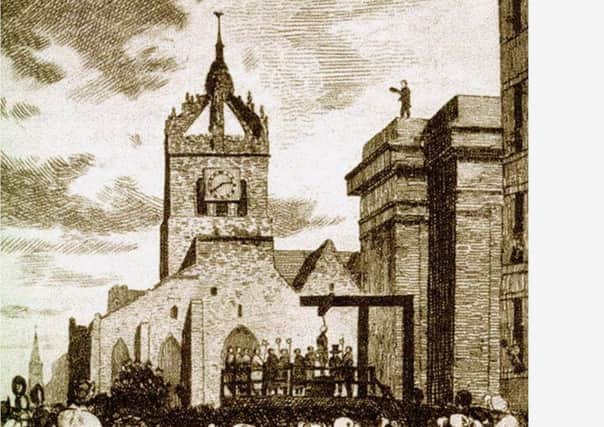From the archive: When Edinburgh murderer William Burke was hanged


He and his accomplice William Hare, who escaped the death penalty by turning King’s Evidence against Burke, were caught murdering people in the city and selling the cadavers to anatomist Robert Knox.
The Scotsman was able to publish the graphic details of the execution on the very day it happened. The hanging took place in Edinburgh at Libberton’s Wynd.
Execution of William Burke
Advertisement
Hide AdPursuant to sentence passed in the High Court of Justiciary, Burke this morning suffered the last sentence of the law, at the common place of execution, head of Libberton’s Wynd.
From the hour in which he heard that his associate Hare was to be admitted an evidence against him, he abandoned all hopes of acquittal, and resigned himself to his awful fate. When consigned to the silence and solitude of his cell, he eagerly availed himself of the consolations of religion and sedulously prepared for the awful change he was soon to undergo. Sincerely anxious to hear of the premises of pardon and acceptance which the gospel holds out to the contrite and repentant sinner, on one occasion when a Catholic Priest and the Rev. Mr Marshall arrived at once at the jail, he exclaimed “admit them both”.
In a short time, however, he dispensed with the visits of Mr Marshall, and resolved to die professing the faith of his forefathers. Thought he talked freely over his murders at all time, he spent much of his time in reading such books as were left by his spiritual instructors, and in deep and serious meditation.
Heavily manacled as he was, and confined to the murderer’s diet – bread and water – he uniformly manifested an astonishing calmness and contentment. One gentleman, by whom he was visited, remarked that his cell was very cold, “Yes, yes,” he promptly replied, “but since matters have come to this, I must just bear it all.”
Though dreadfully afflicted by an excruciating disease and tormented by the approach of an ignominious death, he acted with deliberation; and talked with perfect coherence.
Shortly after eight o’clock, the procession set out for the place of execution. Bailies Crichton and Small, with a party of town officers, first ascended the scaffold and they were followed by Burke, supported by two Catholic Clergymen. He was dressed in decent black clothes, and was perfectly firm and composed. The moment he appeared the crowd set up an appalling shout, which continued for several minutes. The murderer and the Catholic clergymen knelt down and spent a few minutes in devotion. During the time a deep silence prevailed among the assemblage, but the devotions were succeeded by vehement cheering from every quarter, mingled with groans and hisses. When the cheers had subsided, the wretched man was assailed with every epithet of contempt and abhorrence.
Advertisement
Hide AdAs soon as the executioner proceeded to do his duty, the cries of “Burke him, Burke him, give him no rope,” and many others of a similar complexion, were vociferated in voices loud with indignation. Burke in the meantime, stood perfectly unmoved, and gazed around till the cap was drawn over his face, and shut the world forever from his view.
The executioner having completed his preparations and placed the signal in Burke’s hand, the magistrates ministers, and attendants left the scaffold. The crowd again set up another long and loud cheer, which was followed by cries for “Hare, Hare, where is Hare.” Burke lifted his hands and ejaculated a prayer of a few sentences then dropped the napkin and momently the drop fell.
Advertisement
Hide AdThe struggle was neither long nor apparently severe, but at every convulsive motion, a loud huzza arose from the multitude, which was several times repeated after the last agonies of humanity were past.